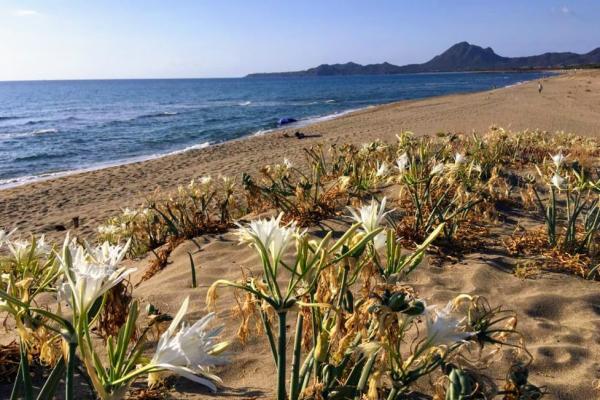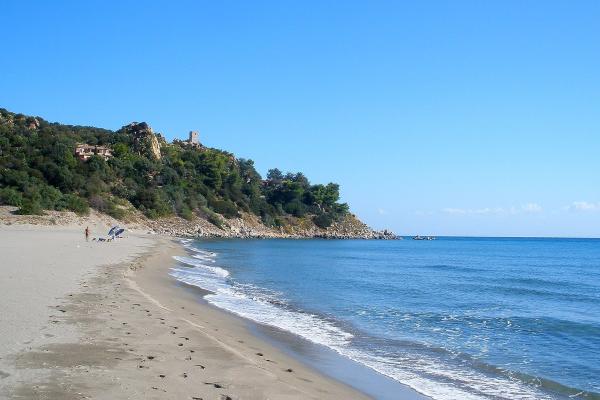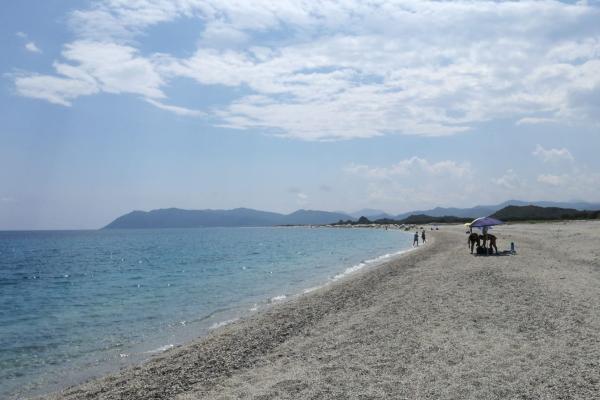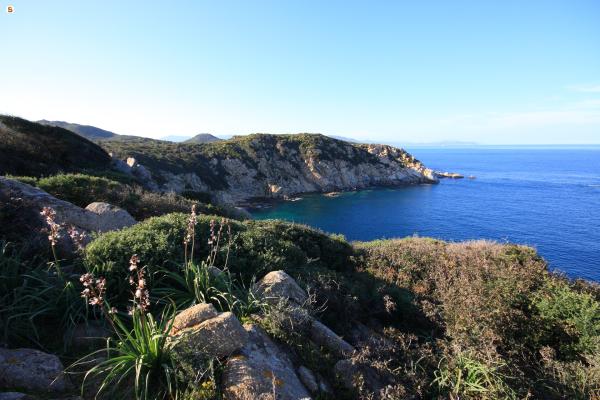From an architectural point of view, it is one of the most beautiful coastal towers on the Island and it is certainly the one with the most original shape: to fulfil the purpose of protecting what was then a ‘gateway’ to the town of Muravera, it was not built next to it, but literally over it. It is no coincidence that the tower of the Dieci Cavalli (Ten Horses) is also known as the ‘tower of the gateway’. The building is located in the locality of San Giovanni, in a place that was an obligatory passage, in ancient times, along the ‘royal road’ leading to Muravera and the villages of the Sarrabus hinterland, coming from the southern coast, because along the sides there were - and still are in part - ponds and marshy areas that are difficult to cross.
The year of construction is not known, but in 1581 the tower was already operational, functioning as a watchtower and for light defence. It owes its name to the fact that it was constantly manned by a force of ten mounted guards, ready to gallop to raise the alarm in nearby villages if pirate ships were spotted.
From an architectural point of view, it is one of the most beautiful coastal towers on the Island and it is certainly the one with the most original shape: to fulfil the purpose of protecting what was then a ‘gateway’ to the town of Muravera, it was not built next to it, but literally over it. It is no coincidence that the tower of the Dieci Cavalli (Ten Horses) is also known as the ‘tower of the gateway’. The building is located in the locality of San Giovanni, in a place that was an obligatory passage, in ancient times, along the ‘royal road’ leading to Muravera and the villages of the Sarrabus hinterland, coming from the southern coast, because along the sides there were - and still are in part - ponds and marshy areas that are difficult to cross.
The year of construction is not known, but in 1581 the tower was already operational, functioning as a watchtower and for light defence. It owes its name to the fact that it was constantly manned by a force of ten mounted guards, ready to gallop to raise the alarm in nearby villages if pirate ships were spotted. In fact, the barbaric raids constituted a devastating scourge in the Sarrabus region between the 16th and 18th centuries. The fortification consists of three building elements. The first is the doorway itself, nine metres wide, six metres high and five metres deep. The two sides of the doorway have arches of different shapes: pointed arches on the side facing Muravera, while the side facing south, which is where the attackers came from, has a depressed arch and a narrowing, with jambs and slabs embedded in the ground. The door serves as a base for the tower, which is about seven metres high and with a circular form. The diameter is aligned with that of the door. Access was from a door located to the west, via a staircase that was then pulled inside. The remains of a curtain wall are the third architectural element and are visible on the west side of the tower. Along the wall, you will see a series of embrasures used by the guards.
The sea is a few hundred metres away. In front of the tower, the long, narrow beach of San Giovanni opens up. Thanks to its size, it is never too crowded and features soft, light sand, eucalyptus trees close to the beach - under which you will find some shade in the hottest hours of the day - and the crystal-clear sea with hints of emerald green. Next to it there is parking, as well as refreshment areas and beach equipment rentals. About 800 metres north of the tower, stands the building that gave the town its name: the little country church of San Giovanni. Its origin is probably Byzantine and it was abandoned and renovated several times, with the last renovation taking place in 2005. Its stone structure, with a longitudinal form, a wooden architrave and sloping roof, is surrounded by greenery.















